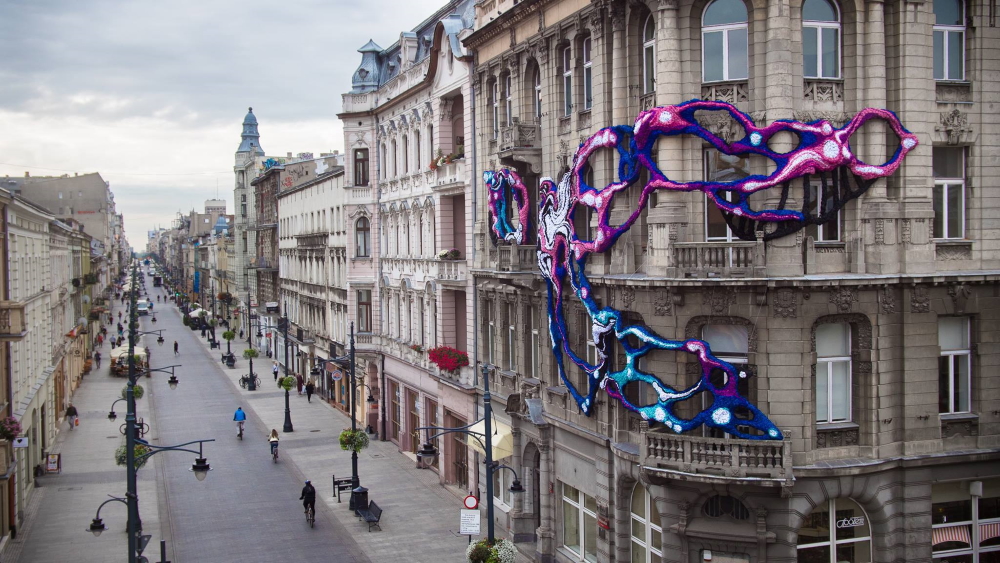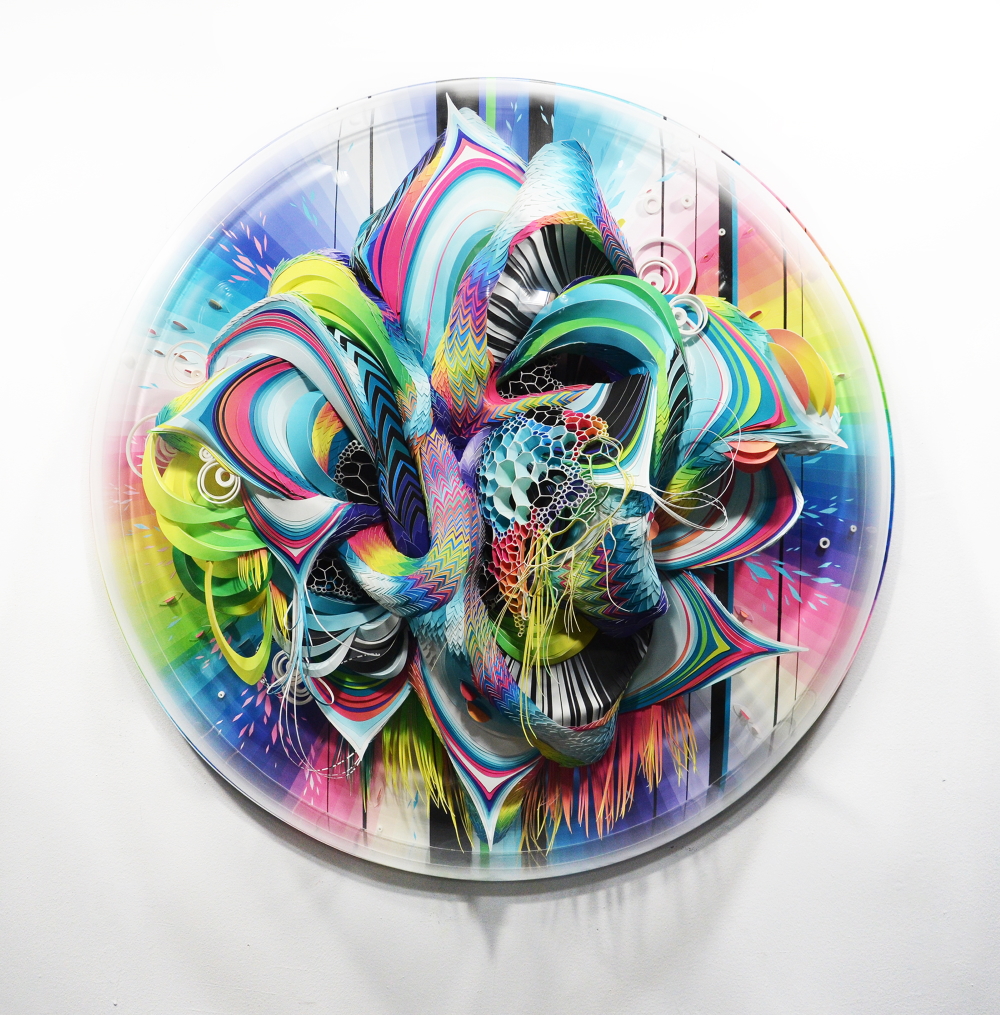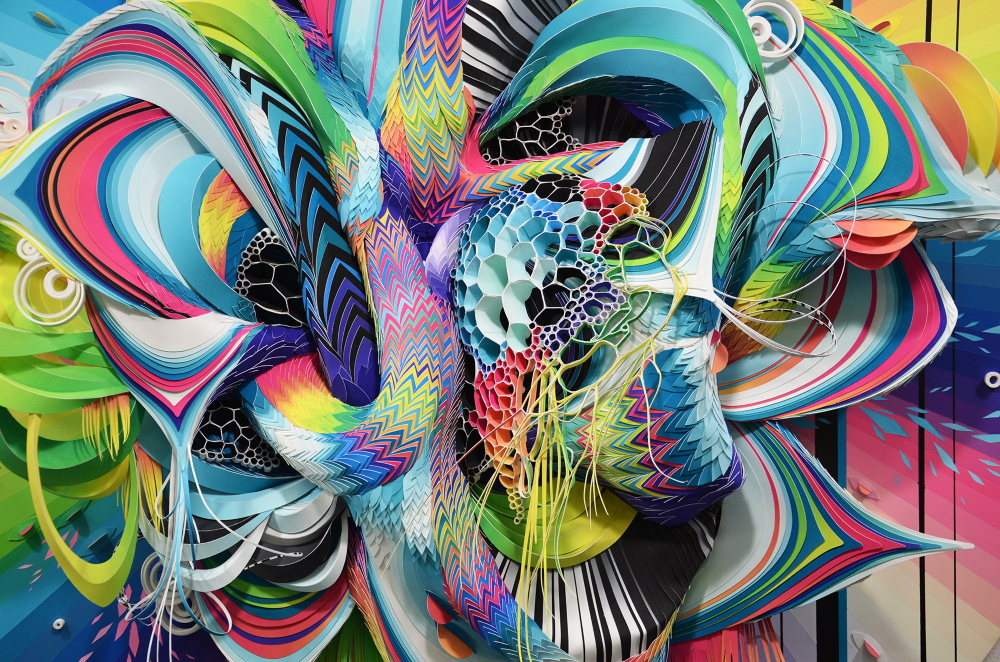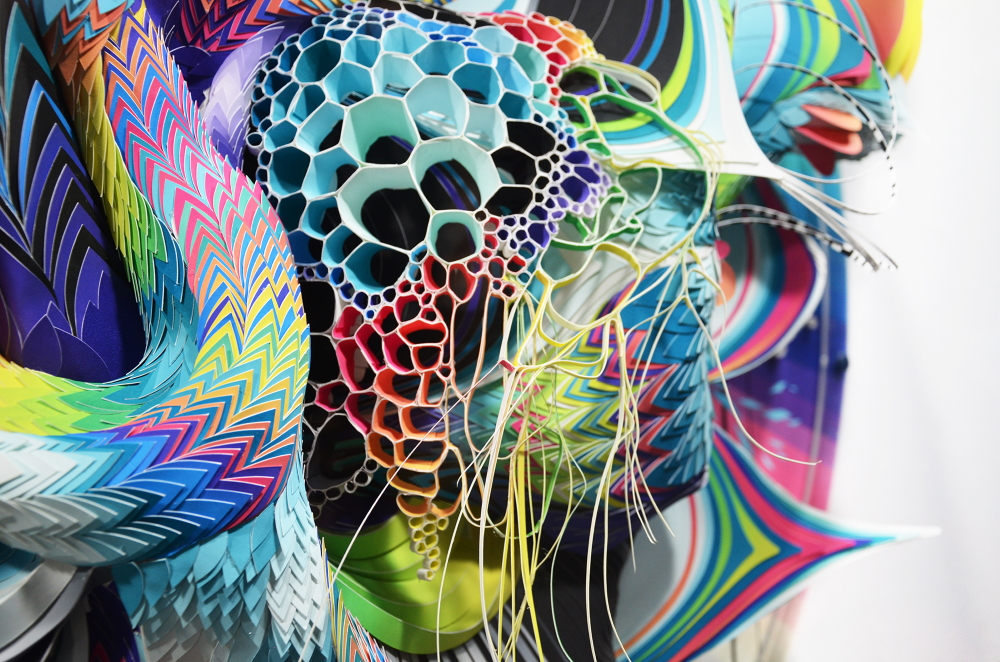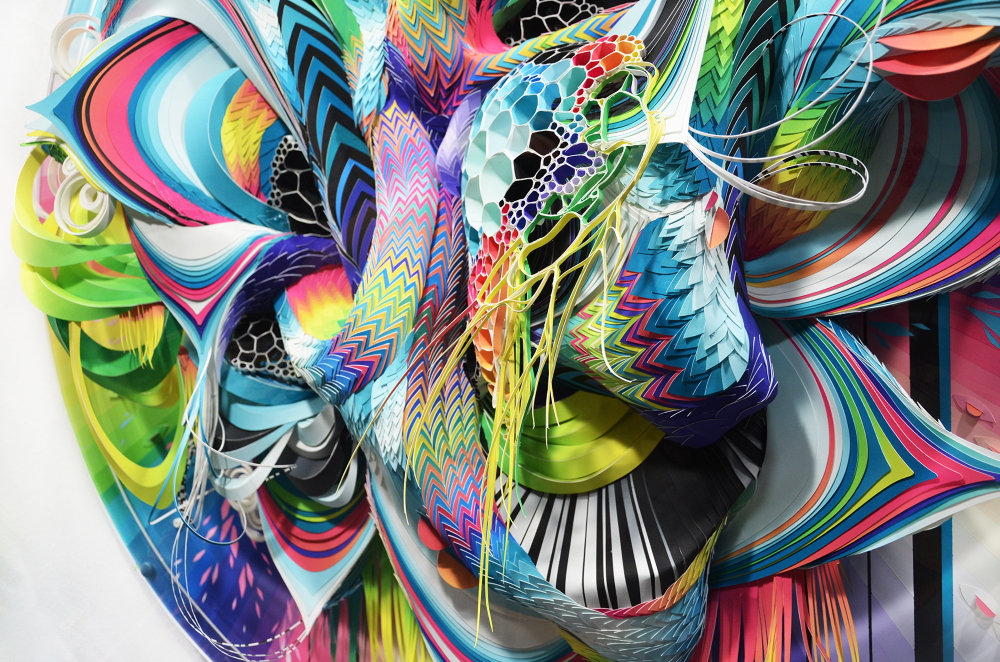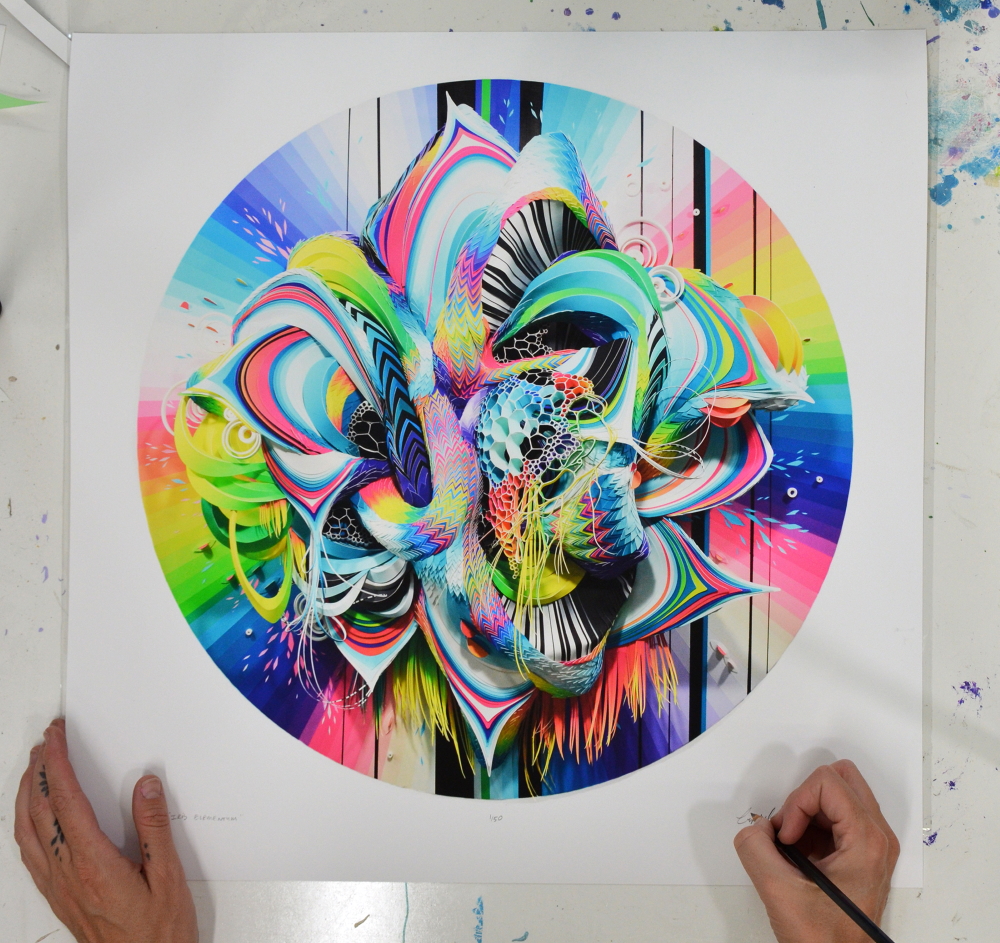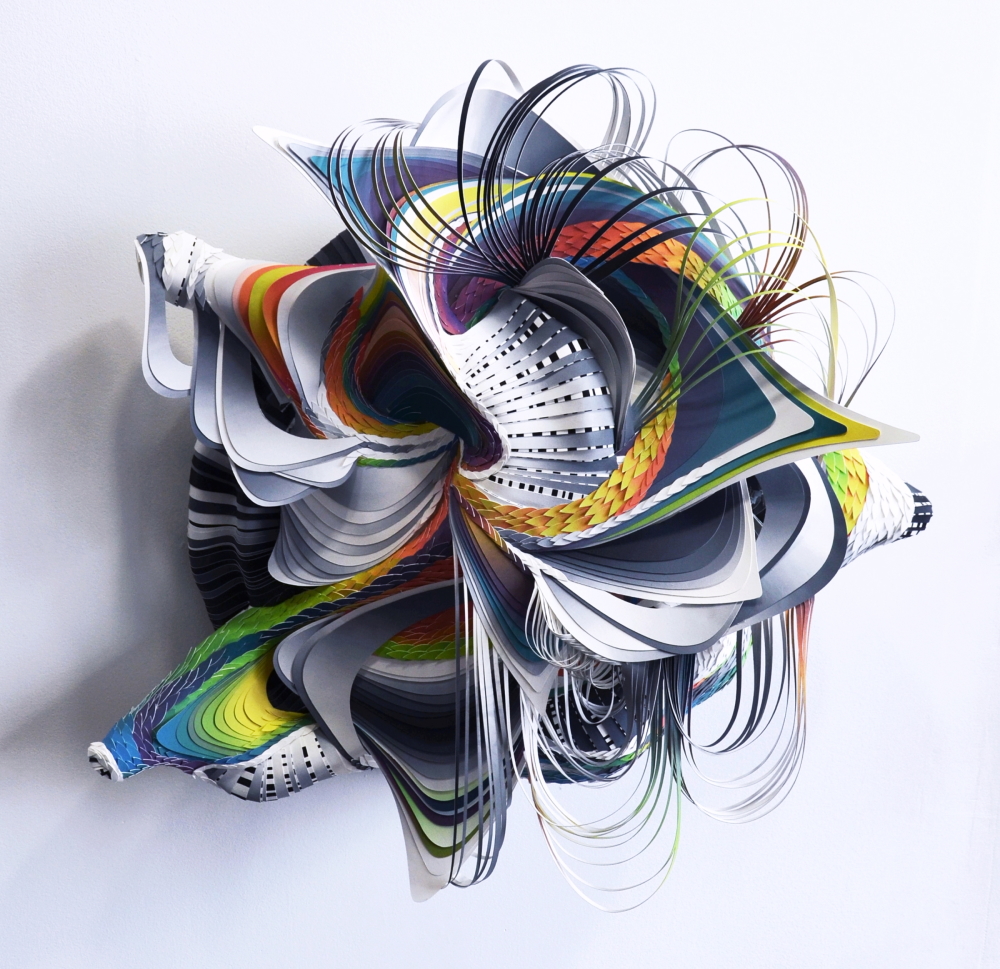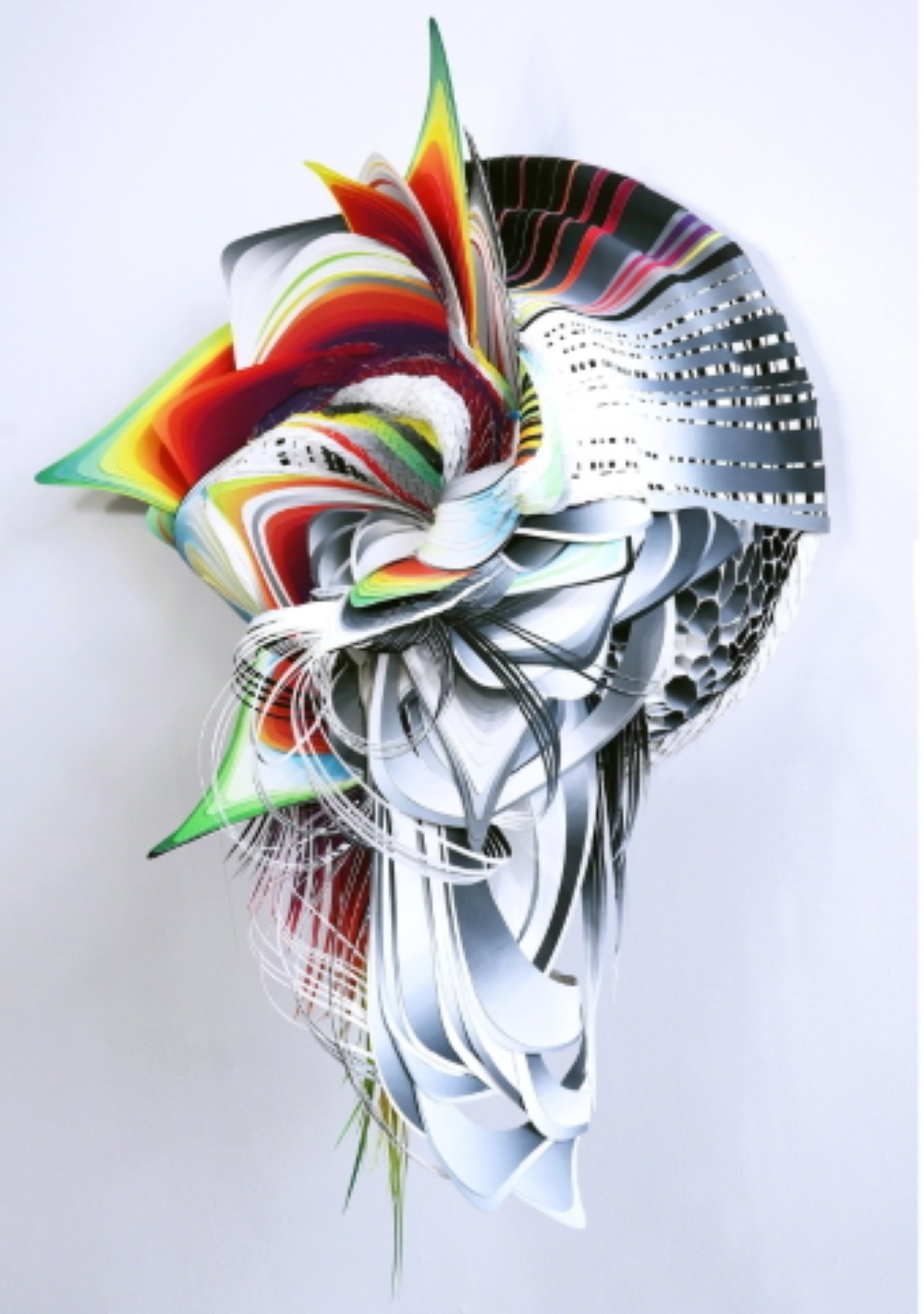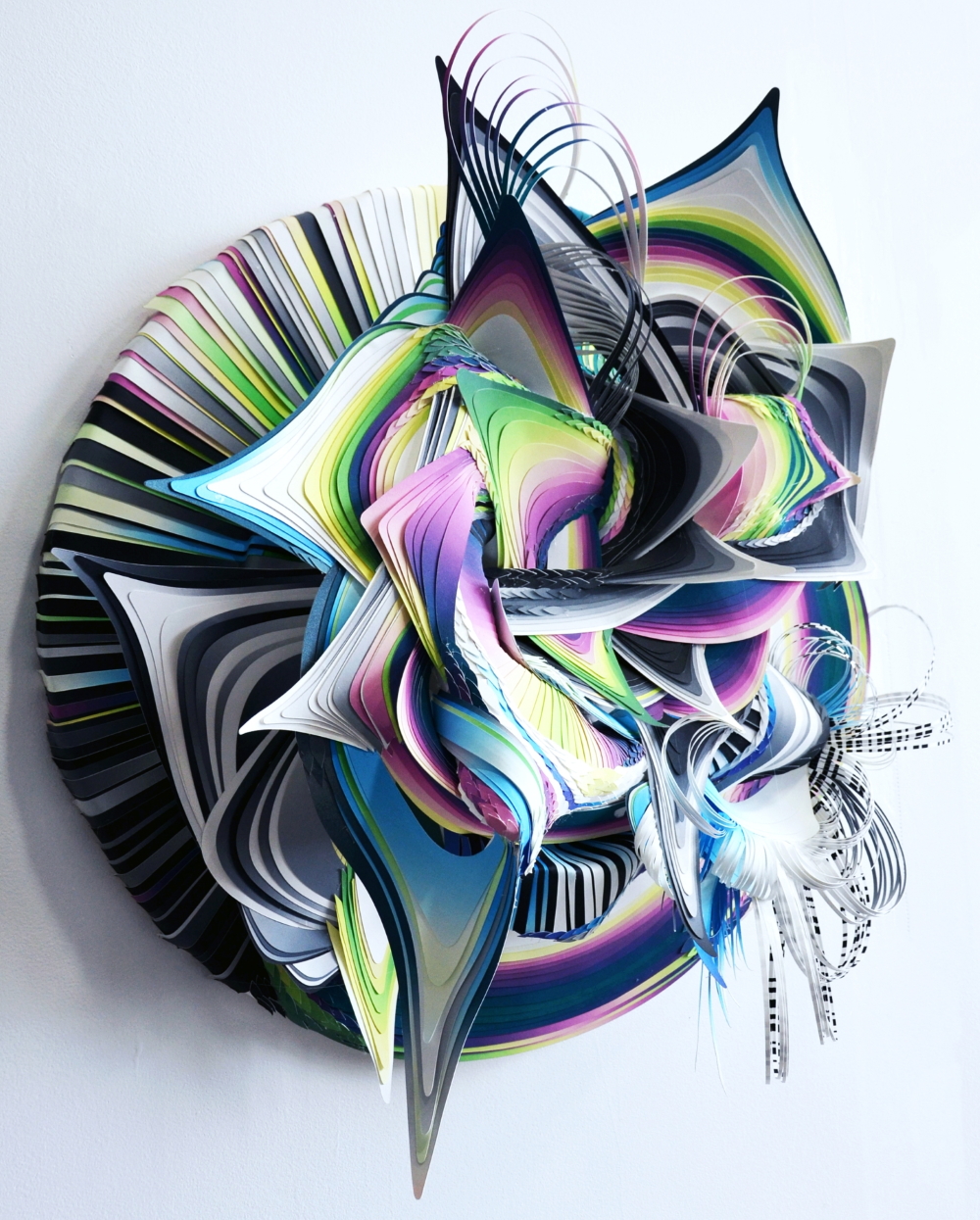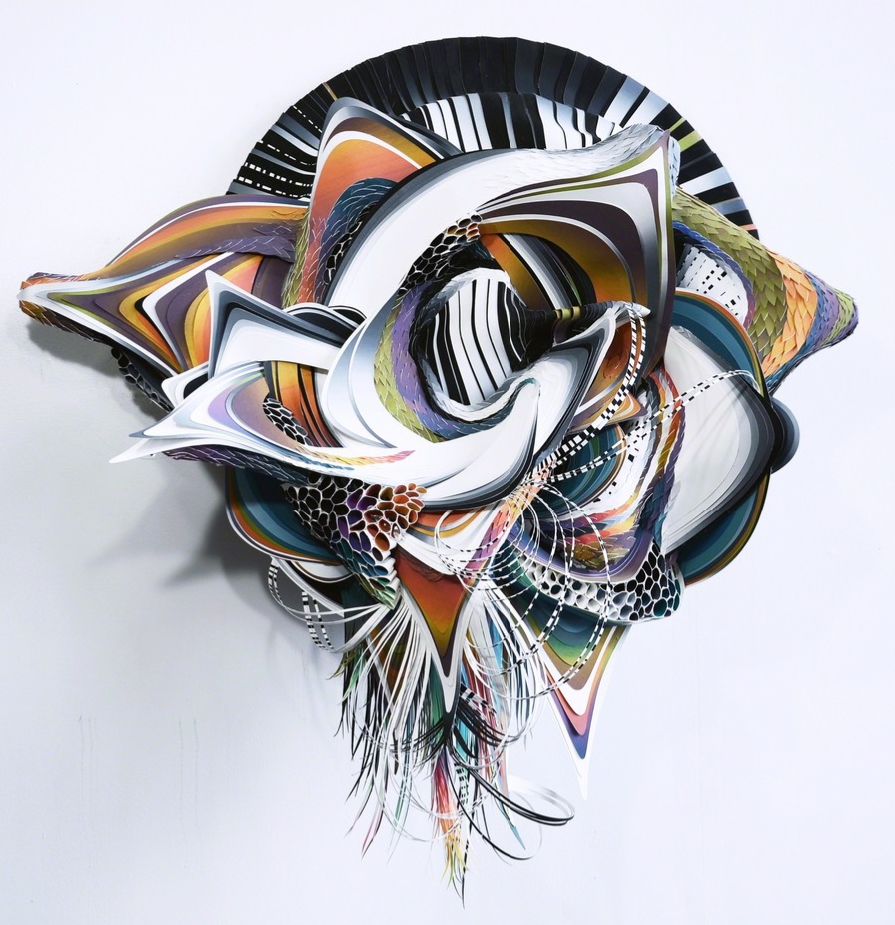Crystal Wagner
contemporary interdisciplinary artist
US
„Psychedelic sculptures that appear to have been teleported from another planet.“ By means of just eleven words artsy.net describes the extraordinary 2- and 3-dimensional creations by Crystal Wagner – be it hand-cut wall-mounted paper forms or immersive, site specific installations up to 117 feet high. Fact is: „Her intricately constructed biomorphic works conjure a feeling of wonder from everyday materials and suggest new possibilities for mass-produced, disposable materials.“
Crystal Wagner
contemporary interdisciplinary artist
US

„I have been making art pretty obsessive since I was four or five“, the native Baltimore (* 27 February 1982) told buzzworthy.com. „The work evolved from drawings of fantastical imaginary birds to what it is today – sprawling biomorphic exotic landscapes that re-conceptualize everyday materials.“ As a kid she was „crazy passionate and pursued every opportunity but there was something about the idea that people had the ability to make things, fabricate their own realities that fascinated me.“
„Crystal Wagner attended Keystone College, a private liberal arts school in La Plume/Pennsylvania where she earned her Associate Degree in Fine Art, receiving awards for both her prose/fiction writing and also her work as an artist“, is to be read on artavita.com. „Ms. Wagner then moved to Atlanta where she attended The Atlanta College of Art. After two more years with a double concentration in both printmaking and sculpture, she earned her Bachelor Degree in Fine Art. In 2004 Crystal Wagner was the recipient of the undergraduate Southern Graphics Council Fellowship for her achievements in printmaking. In May 2008, she completed her MFA at The University of Tennessee as a Graduate Teaching Associate.“ After teaching as a college art professor for five years Crystal Wagner left academia to focus exclusively on her studio practice – in- and outdoor. The most spectacular of the latter is the one at Viacom’s headquater on Time Square in New York where her seemingly living sculptural piece sprawled through and around spaces. „In the Polish city of Łóodź she wrapped an art nouveau building in an organic growth made from wire, nylon and cable ties“ (designboom.com). „‘hyperbolic‘ is a site-specific public installation that responds to the city’s urband landscape. The large-scale work snakes around the corner façade, wrapping around windows, between balconies, and around architectural ornamenation, enveloping the site in a sheath of pink, purple and blue plastic.“ About her taking over of the space, she said: „I am interested in the dialogue between architecture and organic forms/ strucutures found in nature.“ In other works Mrs. Wagner explores, as she has told buzzworthy.com, „different ideas related to human beings and their disconnection from the natural world.“
The creations of Crystal Wagner who is inspired by the visionary Elon Musk and the eloquent author David Abrams (“Spell of the Sensuous”) have been exhibited both nationally and internationally. She lives in Los Angeles, CA.
Interview October 2022
Creating one’s own fantastical reality: multicolor ‚worlds‘ like from outer space
INTUITION/IMAGINATION
How does intuition present itself to you – in form of a suspicious impression, a spontaneous visualisation or whatever - maybe in dreams?
Intuition for me is curiosity. It is moving from one compelling moment, mark, shape, or form to the next, to investigate through my process what something is or will become. I am deeply invested in that curiosity. It is what compels me to keep going.
Will any ideas be written down immediately and archived?
I truly do think through making. From the moment the first mark is made, I work to grow it. I never know what something will become until it is made.
Are great ideas based on intuition and do they reveal themselves in a kind of clear as well complete version that just has to be realized? Or is it endless trials and errors (after the first spark) that result in constant developments up until the final result?
For me, the task of being an artist is to be both a philosopher and a maker simultaneously. The work comes from who we are as humans and in my own practice, where I am constantly creating intuitively, letting the work lead me, my curiosity drive me, I find that the work reveals itself after a process of my own investigation. I want to know what it can become and I allow the process to lead me to the end result.
What if there is a deadline, but no intuition? Does the first fuel the latter maybe?
For me, intuition is triggered after the first mark is made. My advice is always to make the first mark. As a primordial utility, our human nature is compelled to problem solve, to figure it out. Often, I find that when someone is stuck, it’s more that they are not ready to put that first mark. You must do the work.
INSPIRATION
What inspires you and how do you stimulate this special form of imaginativeness?
Nature inspires me. I am in awe of the natural world. The way stems connect to leaves, the way honeycombs have structure. For me, all of my work is rooted in the deep ecological landscape of the world we live in. Imagination is the bridge between what I experience in the real world and then what I create. It is a window to the particular way I see, the moments I focus on.
How do you separate the good from the bad and which ideas are worthwhile to be explored further or whether one idea has the potential of being outstanding really?
For me this question isn’t completely applicable. My studio practice is an ongoing investigation between myself and the work that comes from it. The judgement of good or bad really isn’t something I think about. Instead, it’s more like, which of these directions compel me more.
Has it to appeal to you primarily or is its commercial potential an essential factor?
The relationship between an artist and the audience is always present. For me, it starts with feeding my own curiosity, but I am motivated to reach deeper into my own practice as the work finds commercial success or specific audiences. I try to remember that often intuition can be confused with recognizing our own patterns in making.
Do you revisit old ideas or check what colleagues/competitors are up to at times?
I live in a creative bubble in my studio. I try to maintain a semblance of creative autonomy as the world around me becomes image centric and global.
CREATIVITY
Which time/place/environment suits your creative work process the best (tranquillity or pressure) and which path do you take from theory/idea to creation?
It all starts with a gesture. Whether it’s a massive exterior installation on the outside of a building or a small paper sculpture. My process truly is born from that first mark. They are growths that way. Burgeoning forms spilling from my imagination.
What is better in the realization process: speed and force creativity i.e. grasp the magic of the moment, or a slow, ripening process for implementation/elaboration?
Each of these approaches have their own poetry. The large-scale work I do is created in the same timeframe as the small paper sculptures I make. The scope and scale of the work can be related to the spectacle in one large mark or an intimate flower that slowly comes to bloom.
If problems occur during creativity or one’s stuck even, how can these be solved?
Work. Work. Work. I think through making.
How important are self-doubt and criticism (by others) during such a process i.e. is it better to be creative on your own, only trust your own instincts, or in a team?
I trust my own instincts. The work comes from me, it is a reflection of the way I see the world.
Should a creative always remain true to him-/herself including taking risks & going against the flow or must one, for reasons of (commercial) survival, make concessions to the demands of the market, the wishes of clients and the audience’s expectations?
The fact that art exists in the commercial realm, it is impossible to work completely blind to the influence that the market has on your work. Some avenues of an artists practice are easy for the consumer and client. Maintaining a healthy relationship and boundaries with the interests of the audience and with your integrity is a part of the challenge. In my own practice I have made concessions with certain bodies of work as the demand for those pieces is high, but I am also always continuing my investigation into other avenues of creativity as well.
How is innovation still possible if one has established a distinctive style and, just in case, is it good to be ahead of one’s time even one hazards not being understood?
I think innovation is about being able to recognize your own patterns in making and continue to question them, push outside of them.
When does the time come to end the creative process, to be content and set the final result free - or is it work-in-progress with an endless possibility of improvement?
Each piece I make is a moment. The smaller works contain particular moments of investigation, and the larger ones are massive ones. After I finish a piece, I move on. Start making again.
In case of failure or - worse - a creativity crisis how do you get out of such a hole?
For me failure is giving up on what you love. If for some reason the artwork is not making money, or finding success in the commercial world of galleries, museums. It is important not to give up, to feed the creativity inside yourself. It is only by doing something with everything that you are, and doing it as hard as you can, that the work can find its voice in the world.
SUCCESS
Should/can one resist the temptation to recycle a ‘formula’ one’s successful with?
As an artist I have created murals, installations inside and outside of buildings, drawings, paintings, prints. I believe that if you are actively investigating and curious then the work will evolve naturally throughout your life. It is important to hold onto the compulsion, if you sit down to make something and you are not compelled by what you are doing, it may be time to break the pattern.
Is it desirable to create the ultimate/timeless work, but doesn’t “top of the ladder” bring up the question of “what’s next?” i.e. isn’t such a personal peak “the end”?
An artist’s work is not one piece, it is their lifetime of work- every moment captured within the spectrum of their own creative process.
MY FAVORITE WORK:
"Hyperbolic" was a large-scale exterior installation that I created on the facade of a historic building in Lodz, Poland. Instead of seeing this as a work that represents me entirely, I see it as an important moment of growth and reveals the sheer audacity of my creative aspirations. It was my first exterior installation and navigating building codes, engineering, and finding a way for my work to traverse the facade, activated all of my intuitive senses. I'll never forget the moment when I stood across the street and saw for the first time, the finished piece. It was dimensional growth and it felt alive and it opened my mind to the real possibility of my work becoming architecture in itself.
